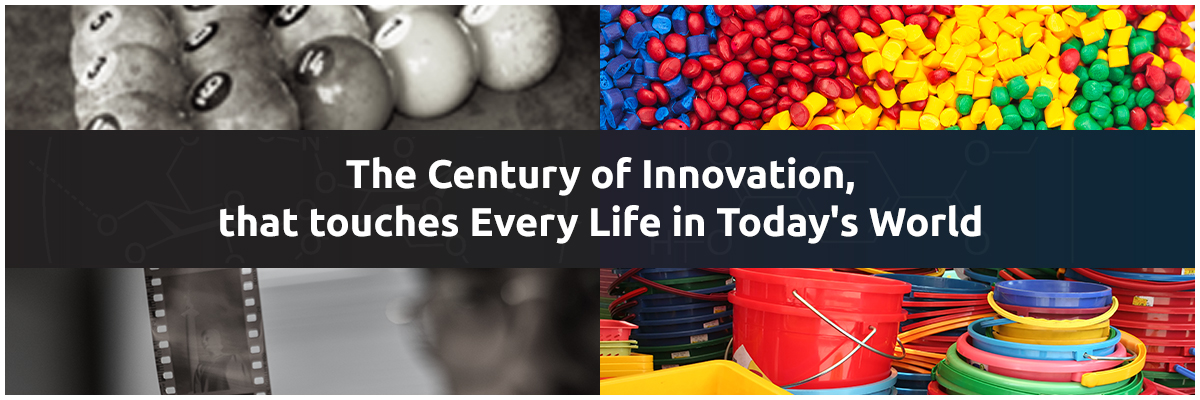
Plastic: A Century Of Innovations That Touches Every Life
Sounds bizarre? Maybe. But lets dive in.
Why do we seek alternatives?
Is it boredom with the old? Outdated
fashion? A thirst for progress? Changing needs? A lack of innovation?
Yes, for all of these drive us toward alternatives.
One such game-changing alternative was plastic (aka polymers) — once a celebrated marvel of modern invention…
Well! It was never a One Night Wonder, but a result of decades of inventions and identifications, that sophisticated the way we Live Today.
The invention of plastic wasn’t accidental; it was a deliberate response to the limited availability of natural materials like ivory, rubber, and tortoiseshell, which were expensive, exploited, and environmentally unsustainable.
Back in the 18th century, everyday products like combs, utensils, and décor, and entire industries such as textiles, construction, and manufacturing, relied heavily on natural materials like ivory, rubber, tortoise shell, cotton, and animal horns. These were limited in availability, and with the Industrial Revolution sparking mass demand, the need for durable, moldable alternatives became clear.
This scarcity, combined with rising costs of natural resources, drove the invention of synthetic materials — plastics.
Plastic, originally meaning "easily shaped," eventually became the name for a group of materials called polymers — long chains of molecules, many of which exist in nature (e.g., cellulose, natural rubber). But most modern plastics are synthetic or semi-synthetic.
Inventor: Eduard Simon (Germany)
Its commercial potential wasnt realized until around 1930 by I.G. Farben in Germany, who found a way to reliably produce it.
Use: Packaging, insulation, disposable containers
(Commercialized in the 1930s)
Inventor: John Wesley Hyatt (USA)
Celluloid not only replaced ivory but also marked the transition from natural to synthetic materials. It revolutionized consumer goods in the late 19th century. Transformed the world with the development of motion capturing film reels
Use: Ivory substitute, film reels, combs, toys
(Based on plant-derived cellulose)
Inventor: Alexander Parkes (UK)
Use: Early moldable plastic for buttons, combs, jewelry
(First man-made plastic based on cellulose)
The first fully synthetic plastic made from phenol and formaldehyde, was the Bakelite. The first plastic not derived from natural substances.
Then after Bakelite inventions, many of the plastics we commercialized in Today’s world were invented. The PS, PVS, PET, PVC, HDPE, ABS and more.
Use: Electrical insulators, telephone casings, radios
(First fully synthetic plastic – thermosetting)
Developer: Waldo Semon (USA)
Use: Pipes, flooring, cables, credit cards
(Made flexible with additives)
Developers: Rohm & Haas, ICI
Use: Aircraft windows, signs, lenses
(Transparent, lightweight, shatter-resistant)
Inventor: Wallace Carothers (DuPont, USA)
Use: Textiles, stockings, parachutes, ropes
Inventors: Eric Fawcett & Reginald Gibson (UK)
Use: Bottles, bags, films, insulation
(LDPE first; HDPE in the 1950s)
Inventor: Roy Plunkett (DuPont, USA)
Use: Non-stick cookware, gaskets, coatings
For a usable product to be made out of plastic, we rely on several machineries, that shapes and deforms the available occurring form of plastic. There are several plastic processing machineries based on their method of operation, Blow moulding machines, Injection moulding machines, extrusion machines, etc.
S&T Plastic manufactures Plastic Injection moulding machines with tonnage capacity from 60 to 800 Tonnages at its World Class manufacturing facility in Coimbatore.
STM Plastic manufactures Plastic Injection Moulding Machines under three main categories – D-Series, Cresto, and Verza – based on their type of application, tonnage capacity, and usage. This product segmentation helps customers choose the right machine for their specific manufacturing needs.
The invention of plastic was a breakthrough of human innovation — solving scarcity with science. While its uncontrolled use has harmed our environment, the responsibility now lies with us. Let’s choose conscious consumption over careless convenience. In the right hands, plastic remains a blessing — not a curse. The careful and responsible usage of plastic will definitely bring balance between the positive and negative impacts of plastic. Let’s be responsible in using plastics and create a safer environment for ourselves and future generations to come.

